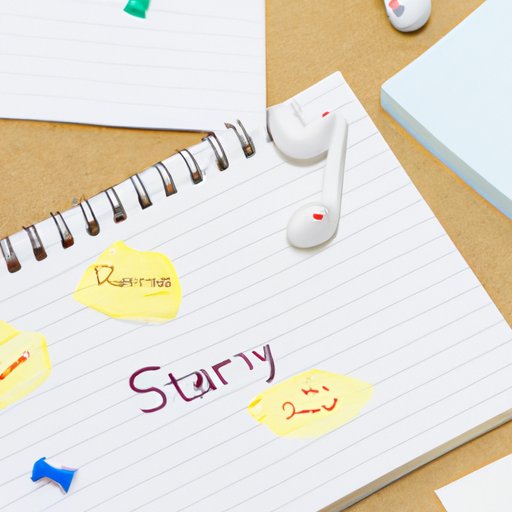Introduction
When it comes to studying and retaining information, everyone has their own methods and preferences. But what is the best way to study? The “best way” is subjective and depends on the individual, but there are some tried-and-true techniques that can help anyone improve their study habits. In this article, we’ll explore some of these techniques and discuss why they work.
Practice Active Listening
Active listening is a key skill when it comes to studying. This involves paying attention to what you’re hearing or reading, rather than just passively absorbing the information. It also means engaging with the material by asking questions, summarizing what you’ve learned, and connecting different pieces of information. By actively listening, you can better remember what you’ve learned.
To practice active listening, start by focusing on the material. Put away any distractions like your phone or other devices. If you’re in a classroom, pay attention to the instructor and take notes. If you’re reading a textbook, read slowly and carefully, and ask yourself questions about the material. Make sure to pause and reflect often. Once you’ve finished reading or listening, review what you’ve learned and summarize the main points.

Take Notes as You Read
Taking notes while reading is another great way to improve your study habits. Writing down key concepts or ideas will help you focus and remember the material better. It also allows you to easily refer back to important points later on. When taking notes, be sure to write down the main points, use arrows or symbols to indicate connections between ideas, and highlight any unfamiliar words or phrases.
You may also want to try mind mapping or concept mapping. This is a visual way of organizing information that can help you better understand complex topics. To create a mind map, start by writing your topic in the center of a page. Then, draw lines outward and jot down key concepts related to the main topic. Finally, draw more lines outward to connect these ideas and add details.
Use Mnemonic Devices
Mnemonic devices are memory aids that can help you remember information more easily. They can be words, acronyms, rhymes, stories, or images. For example, one mnemonic device for remembering the order of the planets in our solar system is “My Very Educated Mother Just Served Us Nachos.”
Creating your own mnemonic devices can be an effective way to remember difficult material. To do this, think of a phrase or sentence that connects the information you need to remember. Then, break down each word or phrase into something easier to remember. You can also create an acronym using the first letter of each word.
Break Up Your Study Time
Studying for long periods of time can be overwhelming and lead to burnout. To avoid this, try breaking up your study time into shorter chunks. This will help keep you focused and motivated. Aim to study for 45 minutes to an hour, then take a short break before starting again.
When breaking up your study time, make sure to set realistic goals. Start by setting a goal for each session and then break that goal down into smaller tasks. This will help you stay on track and make progress without becoming overwhelmed.
Create a Study Space
Creating a dedicated study space can also help you stay focused and productive. Choose a quiet area with minimal distractions and good lighting. Make sure the space is comfortable and well-organized, so you don’t have to waste time searching for supplies or materials. You may also want to keep snacks and drinks nearby to fuel your brain.
Finally, consider adding a few personal touches to your study space. This could be anything from inspirational quotes to photos of friends and family. These small reminders will help keep you motivated and on track.
Conclusion
Studying effectively takes practice, but it doesn’t have to be overwhelming. By practicing active listening, taking notes, utilizing mnemonic devices, breaking up your study time, and creating a study space, you can become a better student and achieve your goals.


